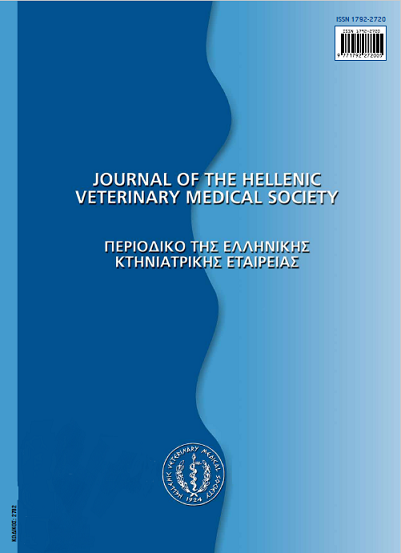Hoof balance and dealing with the major problems in practice
Abstract
Hoof balance is one of the most important factors in the treatment of the lame horse. Quite often bad hoof conformation or poor hoof balance leads to or is closely connected to limb lameness. In this article some characteristic cases, in which the loss of hoof balance has led to lameness, are presented. Moreover the points which should characterize the balanced hoof after shoeing are presented. Finally, the corrective shoes that are most commonly used in practice are also presented.
Article Details
- Zitationsvorschlag
-
DIAKAKIS (Ν.ΔΙΑΚΑΚΗΣ) N., MOUSTARDAS (Ν. ΜΟΥΣΤΑΡΔΑΣ) N., & DESIRIS (Α. ΔΕΣΙΡΗΣ) A. (2018). Hoof balance and dealing with the major problems in practice. Journal of the Hellenic Veterinary Medical Society, 53(1), 44–45. https://doi.org/10.12681/jhvms.15358
- Ausgabe
- Bd. 53 Nr. 1 (2002)
- Rubrik
- Research Articles

Dieses Werk steht unter der Lizenz Creative Commons Namensnennung - Nicht-kommerziell 4.0 International.
Authors who publish with this journal agree to the following terms:
· Authors retain copyright and grant the journal right of first publication with the work simultaneously licensed under a Creative Commons Attribution Non-Commercial License that allows others to share the work with an acknowledgement of the work's authorship and initial publication in this journal.
· Authors are able to enter into separate, additional contractual arrangements for the non-exclusive distribution of the journal's published version of the work (e.g. post it to an institutional repository or publish it in a book), with an acknowledgement of its initial publication in this journal.
· Authors are permitted and encouraged to post their work online (preferably in institutional repositories or on their website) prior to and during the submission process, as it can lead to productive exchanges, as well as earlier and greater citation of published work.









